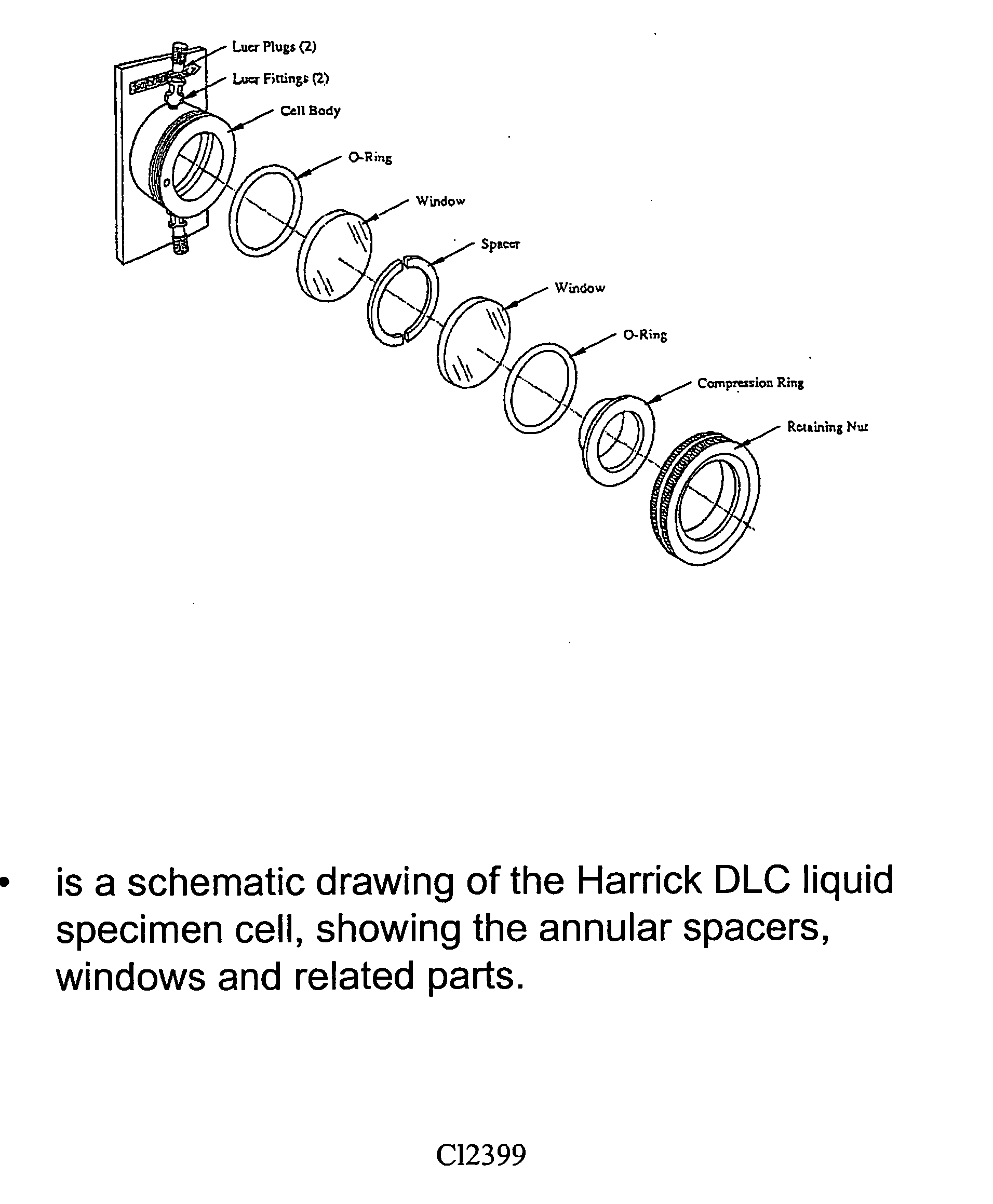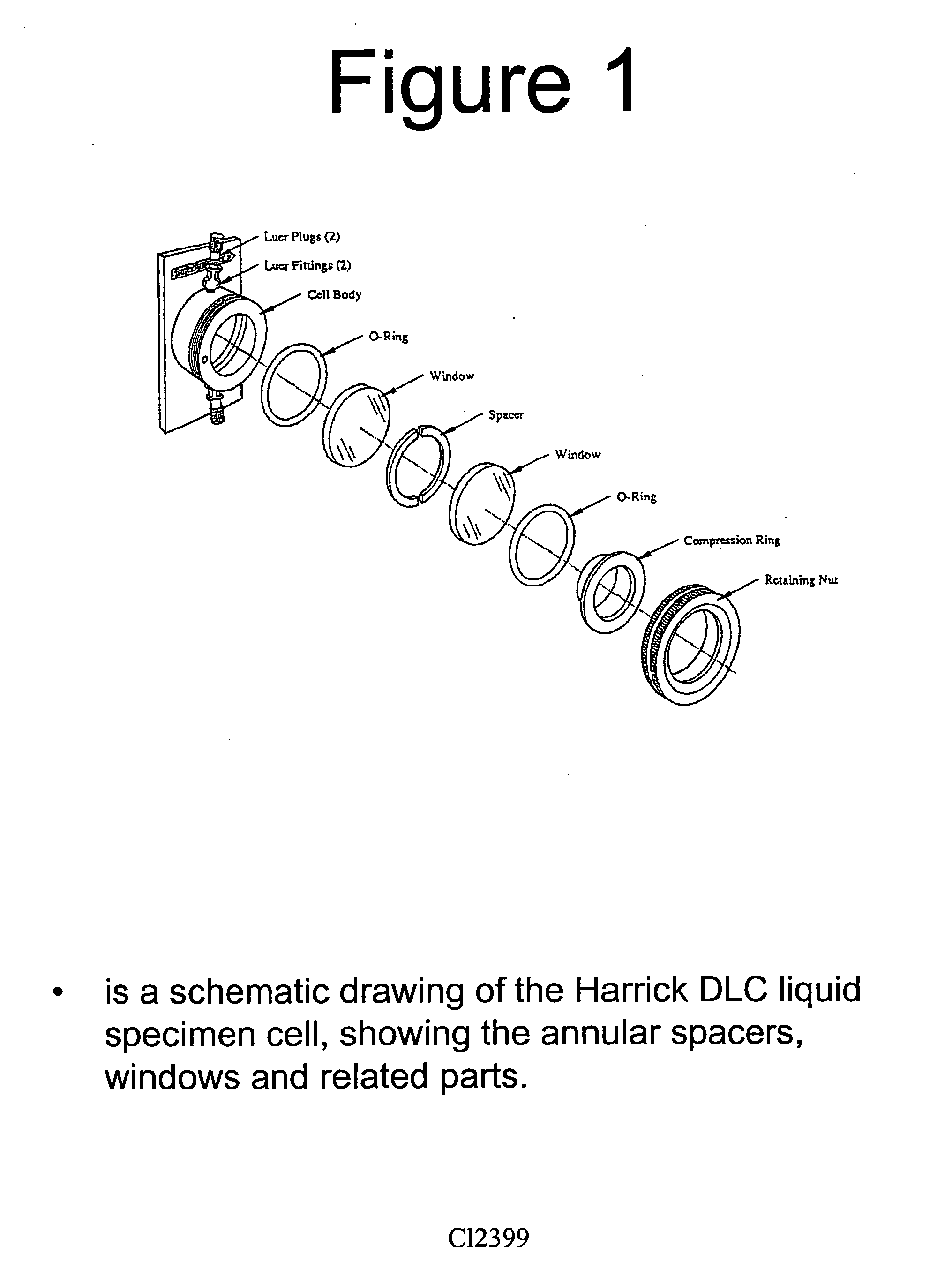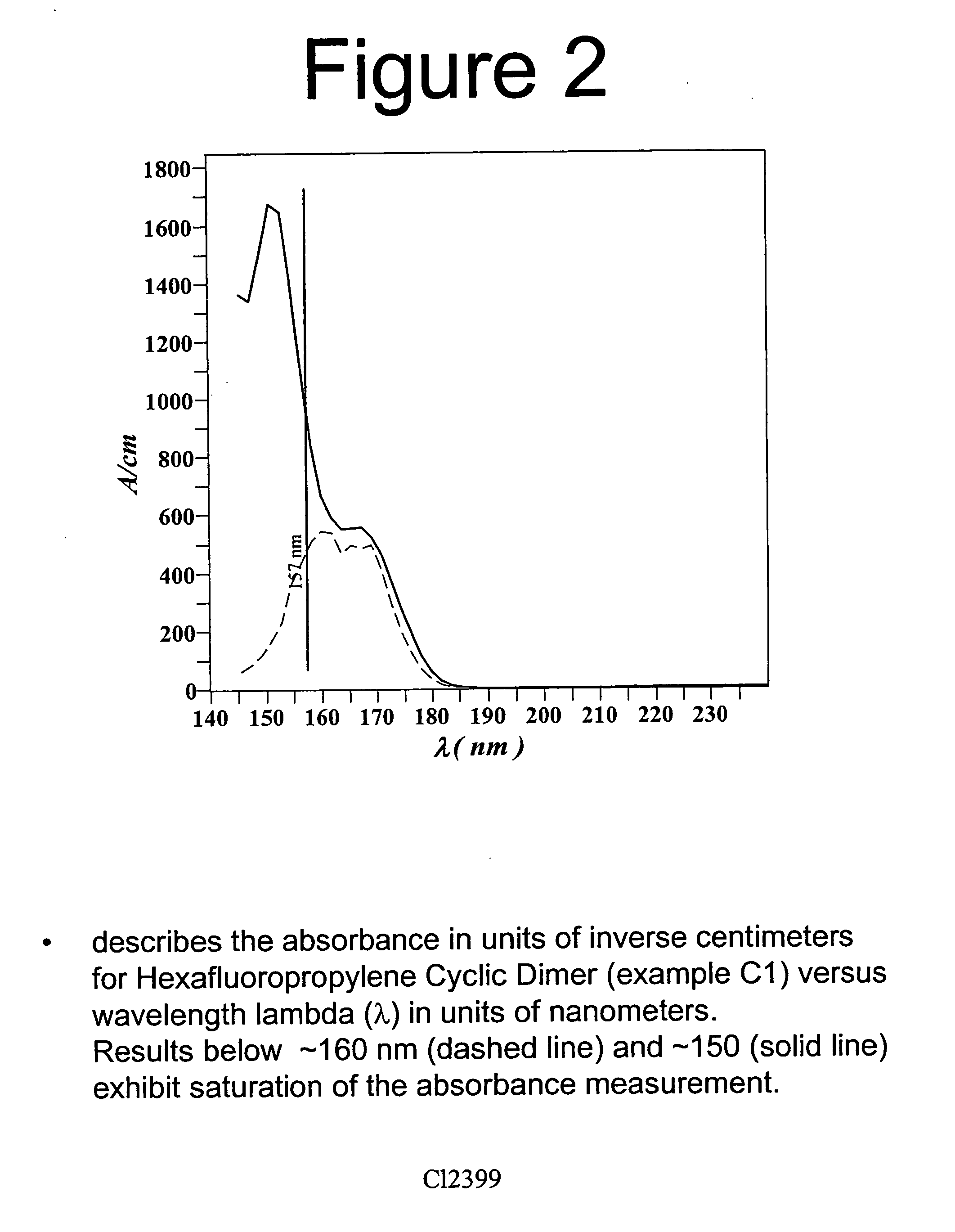Use of Perfluoro-n-alkanes in vacuum ultraviolet applications
a technology of perfluoro-n-alkanes and ultraviolet light, applied in the field of liquid perfluoro-n-alkanes, can solve the problems of inconvenient use, low refractive index of gases, and inability to find liquids that are sufficiently transparent to be practical
- Summary
- Abstract
- Description
- Claims
- Application Information
AI Technical Summary
Problems solved by technology
Method used
Image
Examples
example 1
Example 1A
[0142] The absorbance / centimeter of the perfluoro-n-hexane sample was determined using the relative transmission method with cell thicknesses of 500 / 920 / 2200 micrometers, using the methods discussed above. The sample was as received, which was loaded in air. The optical absorbance per centimeter at 157 nm was 9.13 / cm, and the optical absorbance per centimeter at 193 nm was 0.41 / cm. The results are shown in FIG. 8 and summarized in Table 1.
example 1b
[0143] The absorbance / centimeter of the perfluoro-n-hexane of Example 1A was determined following the same procedures as in Example 1A with the exception that the samples were handled in a nitrogen rather than an air atmosphere. The optical absorbance per centimeter at 157 nm was 1.48 / cm, and the optical absorbance per centimeter at 193 nm was 0.42 / cm. The results are shown in FIG. 8 and summarized in Table 1.
example 1c
[0144] The absorbance / centimeter of the perfluoro-n-hexane of Example 1A was determined using the method of Example 1B except that prior to measurement, the perfluoro-n-hexane sample was shaken with water and was loaded in a nitrogen environment. The optical absorbance per centimeter at 157 nm was 3.71 / cm, and the optical absorbance per centimeter at 193 nm was 0.32 / cm. The results are shown in FIG. 8 and summarized in Table 1.
PUM
 Login to View More
Login to View More Abstract
Description
Claims
Application Information
 Login to View More
Login to View More - R&D
- Intellectual Property
- Life Sciences
- Materials
- Tech Scout
- Unparalleled Data Quality
- Higher Quality Content
- 60% Fewer Hallucinations
Browse by: Latest US Patents, China's latest patents, Technical Efficacy Thesaurus, Application Domain, Technology Topic, Popular Technical Reports.
© 2025 PatSnap. All rights reserved.Legal|Privacy policy|Modern Slavery Act Transparency Statement|Sitemap|About US| Contact US: help@patsnap.com



